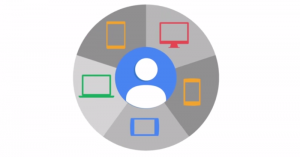Over the course of 13 years running Care.com, Sheila Lirio Marcelo realized that one of the biggest challenges families face is coordinating care on a day-to-day basis. While platforms like Care.com could help connect them with childcare providers and other caregivers, it was much more difficult to solve for the cognitive labor of managing a household and juggling schedules—the sort of work that tends to be a greater burden on women.
Not long after Marcelo stepped down as CEO of Care.com in 2020, she started developing an online education platform called Proof of Learn. Early last year, when her team pulled together a course that would teach developers how to use generative AI for task completion, she wondered if there was another application for the technology. “I said, ‘Wait a minute,’” she tells Fast Company. “Could we use it for families?”
That laid the foundation for her latest venture, Ohai, which has created an AI-powered virtual assistant for families—dubbed “O”—that launched in January on the heels of the company raising $6 million in seed financing. Ohai offers a free trial that primarily provides calendar support, so that potential users (otherwise known as “Chief Household Officers,” in the company’s parlance) can test out the product before signing up for a $25-per-month subscription.
The platform is still in beta, but families can currently use O to scan emails and create calendar events, manage scheduling conflicts and delegate tasks, and even book appointments that require a phone call. (Marcelo would not share any metrics on Ohai’s current user base.)
At the moment, Ohai employs five human assistants who help handle more complex tasks, like booking appointments that might require a credit card on file. As Ohai introduces new features, Marcelo says they will likely be rolled out with more human oversight before being automated. She hopes that eventually Ohai will be able to assist with, say, family travel plans and other more elaborate use cases.
Marcelo believes the market for a tool like this is even larger than that of Care.com, which largely catered to families seeking caregivers. “Not all families are comfortable outsourcing care, but all families must coordinate care,” she says, pointing to the scheduling challenges that parents frequently face, from after-school pickups to school closings. “If you think about it, care logistics is the big nut to crack, beyond getting somebody to help—and even if you’re getting help, you have to coordinate that, too.”
Ohai is also launching at a time when the market is saturated with generative AI tools, including Google’s Bard, Microsoft’s Copilot assistant, and, of course, ChatGPT. Marcelo argues that Ohai is investing in the type of services that simply aren’t a priority for major AI companies.
“We’re tackling a very specific set of use cases,” she says. “Our approach is really narrow, but if you think about the need it’s pretty massive. We’re very focused on . . . uploading thousands of permutations of school calendars across the country and creating an algorithm that is able to scan that.” That also extends to training the platform to navigate sensitive family situations that are more complicated from a logistical standpoint, such as enabling divorced couples to navigate co-parenting more smoothly or coordinating care for children with disabilities.
Prior to launching Ohai, Marcelo’s market research included surveying more than 200 families, who she says shared countless ideas for features that they would find useful. Ohai will be introducing a task tracker soon, along with a mobile app. Marcelo says the company will also be launching a number of “nifty features” intended to simplify scheduling and calendar management. So far, however, a rather mundane feature has been surprisingly popular among family users: booking haircut appointments.
(8)






